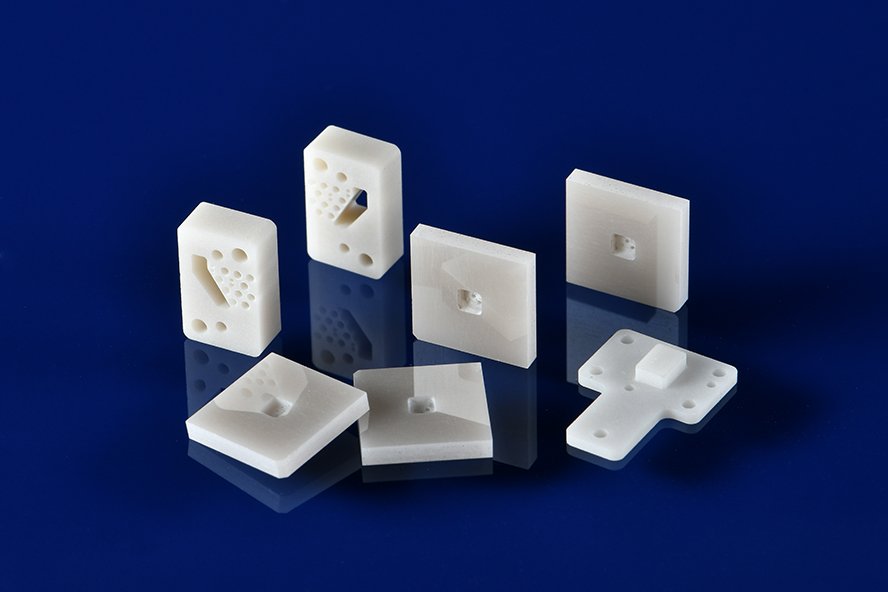In current semiconductor devices, heat dissipation and insulation have always been unavoidable issues. In fact, beryllium oxide has been used in semiconductor device substrates, radio frequency devices, etc. as early as the 1950s and 1960s. With the advancement of technology, after 2000, aluminum nitride began to gradually replace beryllium oxide as the preferred material in semiconductors, especially in applications with high requirements for heat dissipation. Secondly, BeO has safety hazards, and inhaling dust is too harmful to the human body, while AIN is a safe and non-toxic material.

Properties and Advantages of Aluminum Nitride
Although the thermal conductivity of BeO (250 W/(m·K)) is significantly higher than that of AlN (theoretical value is about 320 W/(m·K), actual value is about 170-200 W/(m·K), the comprehensive thermal performance of AlN is more suitable for semiconductor needs. The thermal expansion coefficient of AlN (4.5×10⁻⁶/℃) is close to that of third-generation semiconductor materials (such as SiC, 4.0×10⁻⁶/℃), which can reduce the interface delamination problem caused by thermal stress. The thermal expansion coefficient of BeO (7.5×10⁻⁶/℃) is quite different from that of SiC.
✅ AIN thermal conductivity coefficient is above 170W/m·K
✅ Non-toxic and environmentally friendly
✅ Electrical insulation
✅ High mechanical strength, able to withstand temperatures above 1000°C
✅ The dielectric constant is only 7.4 at 1MHz and the loss is 1.6 × 10⁻⁴ at 1MHz
Limitations of Beryllium Oxide
The fatal flaw of BeO is that its powder is highly toxic. Long-term exposure can cause lung diseases. In addition, it poses a serious threat to the environment and employees during production and processing. Secondly, the waste disposal cost of BeO is high, which does not meet the requirements of green manufacturing. The reason why aluminum nitride has replaced beryllium oxide as the core material of semiconductors is that it is safe and environmentally friendly, and has a balance of thermal-mechanical-electrical comprehensive properties and a mature preparation system. Although BeO has a greater advantage in thermal conductivity, its toxicity and environmental cost issues will gradually be eliminated by the semiconductor market.
Aluminum nitride vs beryllium oxide
| Property | Beryllium Oxide (BeO) | Aluminum Nitride (AlN) |
| Thermal Conductivity | ~250 W/m·K | 170– |
| Thermal Expansion Coeff. | 7.5×10⁻⁶ /°C | 4.5×10⁻⁶ /°C (matches SiC) |
| Toxicity | Highly Toxic | Non-toxic, environmentally safe |
| Dielectric Constant (1MHz) | ~6.6 | ~7.4 |
| Mechanical Strength | Moderate | High |
Aluminum Nitride Application Range
At present, with the support, improvement and perfection of aluminum nitride technology, it has played an outstanding role in many fields, not limited to the semiconductor field, such as
✅ Spacecraft heat pipe components
✅ Power electronic devices
✅ MEMS sensors
✅ X-ray equipment
✅ Laser components
✅ IGBT modules
Aluminum Nitride Manufacturing Company
We have extensive experience in aluminum nitride machining. With our sophisticated equipment, we can achieve a variety of customized options. Whether it is sheets, rods or blocks, we can provide the corresponding services perfectly. Please feel free to contact our experts to help your project.
